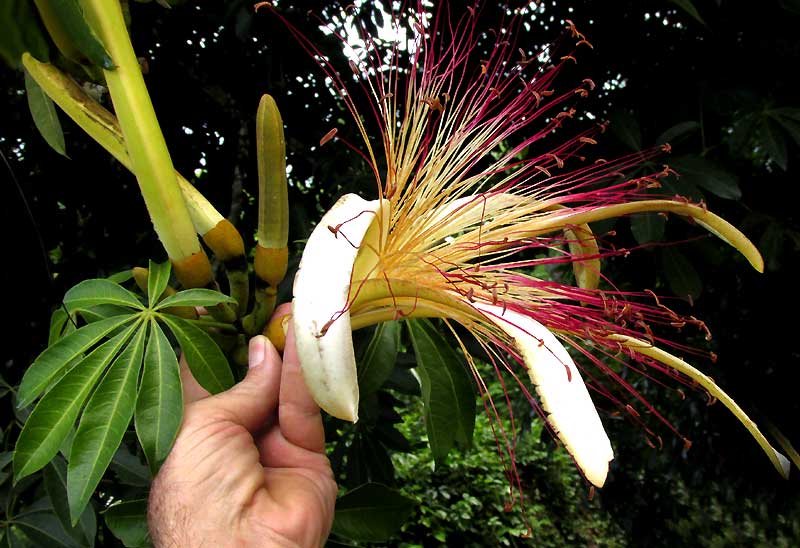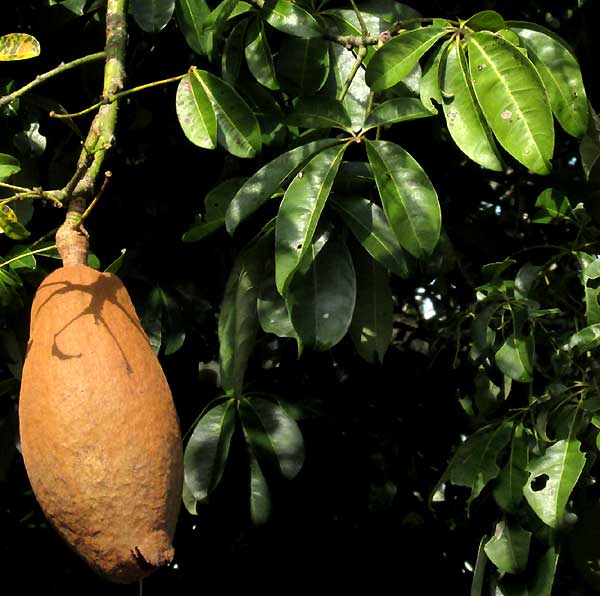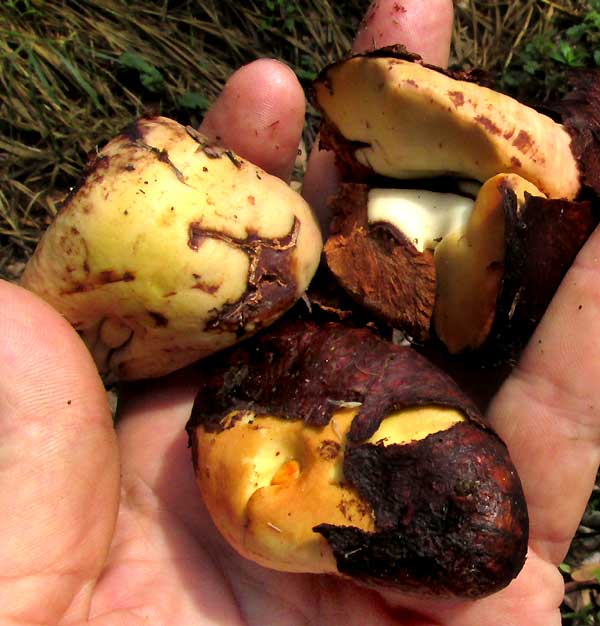Excerpts from Jim Conrad's
Naturalist Newsletter
from the March 22, 2019 Newsletter with notes from an October 5th, 2018 camping trip into Chiapas, the southernmost state of MÉXICO
GUIANA CHESTNUT

I first met the Guiana Chestnut tree on November 20th, 1996. I know the date because I was keeping notes for my book A Birding Trip through Mexico," available online at ../mexbirds/ Late that day I'd reached the banks of Laguna Catemaco, a large, beautiful lake in southeastern Veracruz state. I erected my tent on the lake's bank, then sat down to watch the Sun set over the lake. And between the Sun and me, my first Guiana Chestnut was growing in shallow water about 50ft out. Herons were gathering in it to roost for the night. I sketched the scene and later did some artsy Photoshop work on it, and that's shown here.
Therefore, last October 5th as I was hiking the road from Palenque National Park to the town of Palenque, Chiapas, even though the trees were arrayed with huge, gorgeous blossoms, it was almost a disappointment to find a whole row of planted Guiana Chestnuts tamely lined up along the tourist walk. Needless to say, no roosting herons were gathering in them, and no lush garden of ferns, lichens, mosses, bromeliads, orchids, anthuriums and arboreal cacti mantled their branches.
Even so, I was glad to see a fully open flower hanging so low that I could press my nose into it and feel its long, pink stamens tickling my face. That's the flower at the top of this page. In that picture the three green, erect, cigar-shaped items at the blossom's left are unopened flower buds. To the left of my hand is a typical "digitally compound" Guiana Chestnut leaf, its several leaflets uniting at their bases like the "digits" of a hand coming together at the palm.
Our flowering Chiapas tree also bore large, capsular-type, brown, woody fruits, as shown below:

Some of those fruits had burst open, leaving seeds lying on the ground, seen below:

Each Guiana Chestnut fruit is divided into five compartments, and in each compartment several seeds are squeezed together in a package of brown, papery tissue. In the above picture you see three seed clusters, the cluster at the upper, right broken apart to reveal individual seeds. The seeds taste somewhat like European chestnuts and can be eaten raw, roasted, or ground into flour for making bread or a nourishing drink. Even the tree's leaves and flowers are edible.
The tasty seeds explain the "chestnut" in the name Guiana Chestnuts. The species is also known by such names as Malabar Chestnut, French Peanut, and Provision Tree. Sometimes it's sold commercially under the name of Money Tree or Money Plant, because in Asia it's often planted in the hope that it'll bring prosperity. But, the whole world knows the tree as PACHIRA AQUATICA, and when you look up that name you see that it's native from Mexico south through Central America to Colombia.
Despite the Guiana Chestnut's history of provisioning people with nutty seeds, there's some evidence that the nuts shouldn't be eaten by humans, since they contain cyclopropenoid fatty acids, which some say is carcinogenic. Of six laboratory rats fed on the nuts, five died and the remaining one developed serious health issues, according to a 2008 publication by Hanus and others.
In Mexico, the plant has been used in traditional medicine for many cures, ranging from asthma and diabetes, to skin problems and dysentery, as well as to "purify the blood," and to ward off "bad air" that mysteriously comes around at certain hours of the night.